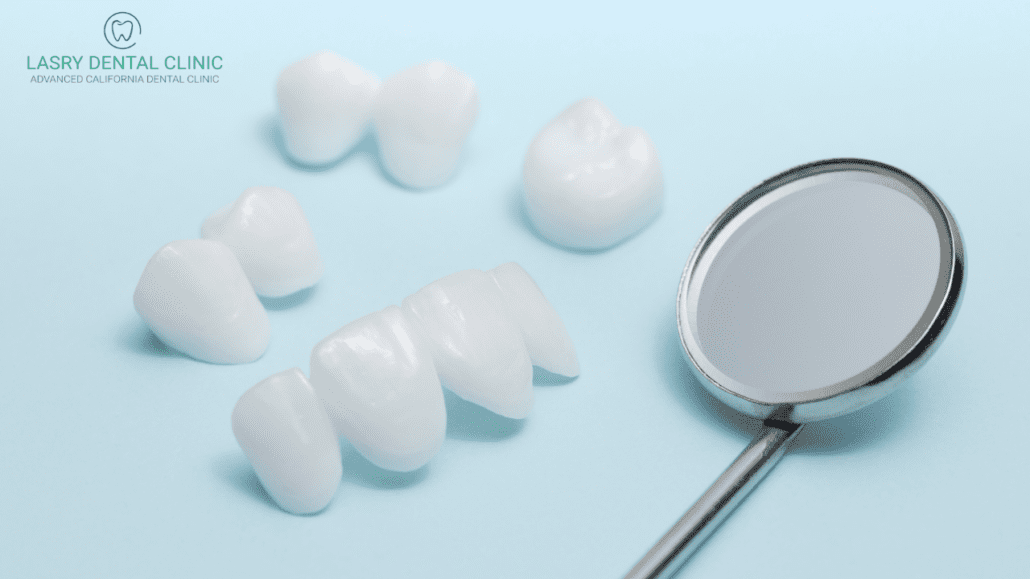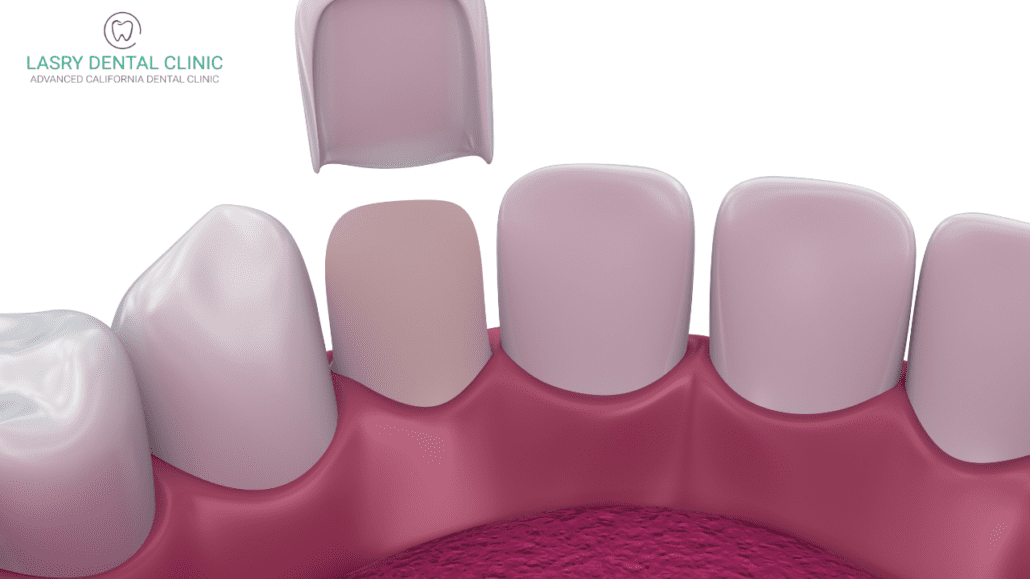Composite Bonding Cost, Procedure, and Results
Composite bonding is a pretty standard cosmetic procedure that we perform in our dental office. Although your teeth are naturally strong and durable, they can chip or break for many reasons.
Dental bonding is what we offer to return your tooth to its natural appearance and function!
RELATED: HOW TO FIND A GOOD DENTIST – 4 SIGNS YOU FOUND “THE ONE”
How Composite Bonding Works
If you really want to have that front tooth repaired or get a brighter smile, you’re not alone. And that’s where composite bonding comes into play.
This can seem confusing because not everyone talks about this procedure when it comes to correcting your smile. Because there’s so much information on dental bonding, we thought we would break down the basics to help you decide which is best for you.
What is dental bonding?
Bonding is the application of a tooth-colored composite resin directly to the tooth to make it appear straighter or whiter. This doesn’t require any outside materials or steps to make, so the entire procedure takes place in a single office visit.
What is the process of getting bonding on a tooth?
Bonding is typically a quick and simple option to restore a tooth. Ordinarily, the procedure doesn’t require a local anesthetic.
Here are the common steps for composite bonding:
- Step 1: Your dentist chooses a composite resin that matches the color of your natural teeth.
- Step 2: The tooth’s enamel surrounding the missing portion of the tooth gets roughened. This takes place without anesthesia for minor chips (although you might hear the noise of a dental drill).
- Step 3: A liquid or gel gets applied to the roughened tooth surface. This makes microscopic pores in the enamel, which aids in bonding the resin to the tooth. Your dentist gently rinses and dries your tooth.
- Step 4: Your dentist applies a special liquid known as a “bonding agent” to the tooth.
- Step 5: The composite resin gets carefully applied to the tooth, then sculpted to give the tooth a natural appearance.
- Step 6: A special dental light cures or hardens the bonding material.
- Step 7: The restoration receives a final shaping and polishing.
What is a bonding agent?
This is a liquid that adheres to the bonding material to the tooth. Before the composite application, the liquid may require an additional application of the curing light to completely solidify the adhesion.
Why you might need bonding
Bonding treats a variety of different issues, including:
- Repairing a chipped tooth.
- Closing gaps between teeth.
- Filling small cavities.
- Covering stained or discolored enamel.
- Changing a tooth’s shape.
- Creating a brighter smile.
What are the benefits of dental bonding?
- Provides a less expensive option than other restorations such as veneers and crowns.
- Requires only one office visit.
- Usually requires no anesthesia.
- Provides immediate, same-day results.
- Requires little or no tooth removal.
RELATED: INVISALIGN IN LOS ANGELES: DO YOU REALLY NEED IT?
Composite Bonding Cost
Dental bonding provides an affordable choice to repair your teeth and improve your smile. Several factors determine the total cost of bonding procedures, such as:
- Location of the dental office.
- The extent of the tooth’s damage.
- The number of teeth treated with bonding.
- Your dentist’s expertise.
Your dentist can explain the total expense of your bonding procedure in detail. Typically, the cost of bonding for a single tooth ranges between $100 and $600.
RELATED: HOW TO BRUSH YOUR TEETH PROPERLY
Composite Bonding VS Veneers
Composite bonding and dental veneers have the same goal: to cosmetically restore and improve imperfections in your teeth.
If you’re looking for a faster and less costly option to accomplish this, you want composite bonding.
However, you may want to consider veneers in some situations. While these two cosmetic dental procedures have the same goal, they differ in several ways.
Here are some differences between composite bonding and dental veneers:
- Preservation of natural tooth structure. Dental veneers require removing a thin layer of enamel on your tooth’s entire front surface to make room for the veneer. Dental bonding usually requires no tooth removal.
- The material used for the restoration. Dental laboratories fabricate veneers from porcelain or a similar ceramic. Dental bonding uses a composite resin.
- The number of office visits. Bonding requires only a short, single visit for completion. Dental veneers require multiple, longer visits.
- Direct vs indirect. Your dentist directly applies composite resin to the tooth. Then, we sculpt and polish it in the office. With veneers, you have to wait for a dental laboratory to make your custom fit.
- Longevity. The new composite resin bonding materials can last ten years or longer. But typically, veneers last longer than bonding. Both options require good oral hygiene and regular dental checkups and cleanings.
- Cost. Dental bonding usually costs less than veneers. However, consider that veneers resist stains while bonding does not. Bonding may require periodic cosmetic procedures and even replacement to keep your smile bright. Veneers offer a more permanent solution with a one-time cost.
PROS AND CONS OF BOTH
With veneers, your dentist matches the color shade of your natural teeth more precisely than dental bonding.
If you’re worried about future stains, don’t be! The color we use for veneers is resistant to harsh dicoloration.
Disadvantages include the need to remove some enamel on the tooth’s front surface. This can cause some sensitivity. And although veneers are quite durable, they may chip and crack.
- Dental Bonding
What are the advantages of composite bonding? For one, there’s no need for tooth removal or dental anesthesia. It’s also performed in one visit. That means it costs less than other cosmetic procedures.
Disadvantages of bonding include their durability and stain resistance compared to porcelain.
RELATED: TEETH WHITENING IN LOS ANGELES
How Long Does Composite Bonding Last?
With proper care, dental bonding can last for ten years or longer. The longevity of bonding depends on several factors, such as:
- Location of the bonding in your mouth. Bonding on front teeth chips more easily.
- Your choice of food and drinks. A more acidic diet increases wear on the restoration.
- Your habits. Chewing on ice, popcorn kernels, or non-food items makes bonding susceptible to chipping.
- Grinding and clenching. Either of these negatively affects the longevity of bonded restorations.
- Oral hygiene. Excellent home care and regular dental checkups and cleanings prolong the life of all restorations.
Do your teeth have to be straight for composite bonding?
Nope! Dental bonding can help improve the appearance of crooked teeth. This type of bonding can accomplish minor tooth straightening.
Aftercare instructions
- Brush and floss daily.
- Visit your dentist regularly.
- Avoid foods and drinks that tend to stain.
- Don’t use tobacco products.
- Avoid biting hard foods directly on bonded front teeth.
- Wear a custom-made nightguard if you grind your teeth in your sleep.
NEXT: EVERYTHING YOU NEED TO KNOW ABOUT LOS ANGELES VENEERS








Thanks for the reminder that flossing will also be necessary to do daily after tooth bonding. I want to consult a dentist about that because I’m thinking about undergoing that procedure. I think that will help me a lot in making sure that my teeth would be protected from chipping.